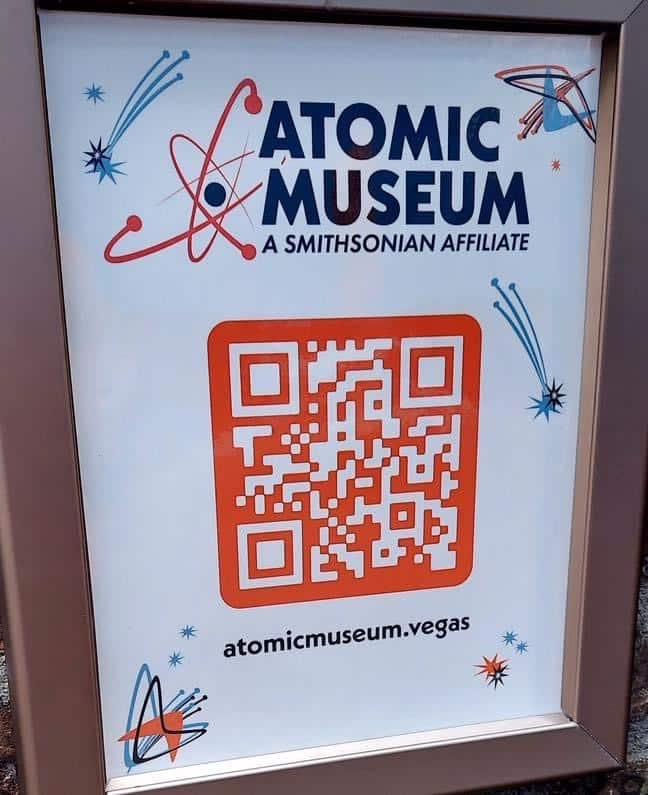The Atomic Museum in Las Vegas, Nevada is one of the area’s most visited attractions and for good reason! Opening its doors in 2005, the museum is a national science, history and educational institution that tells the story of the United States’ nuclear weapons testing program at the Nevada Test Site. A Smithsonian Affiliate, the Atomic Museum was also designated as a private National Museum in 2012 by Congress. This engaging museum uses lessons of the past and present to better understand the extent and effect of nuclear testing on worldwide nuclear deterrence and geo-political history.
If you look at the US nuclear test map below, you will note something that may be news to you! Almost 60 years ago, Hattiesburg was “the bomb” – at least we were a nuclear bomb testing site.
The Atomic Energy Commission (predecessor to the Energy Research and Development Administration and later the Department of Energy) conducted two tests in Lamar County.
But WHY Mississippi and WHY Hattiesburg? The AEC chose this area because it had a 2,700 feet deep salt dome in the middle of a sedimentary basin. The government decided that it would be a good place to conduct underground tests, as the domes could be thousands of feet deep and would help hide a test explosion’s seismic waves. The idea was that during the detonation of a nuclear device suspended within a large cavity, the air would cushion and muffle the shock and lessen the chances of detection.
The two detonations were part of “Project Dribble” and were dubbed “Salmon” and “Sterling.” Salmon, was exploded 2,700 feet down in solid salt. The second detonation, Sterling, was a smaller bomb placed in the cavity left behind by the first blast. Scientists hypothesized that the shockwaves of the second detonation would be muffled by the cavity, effectively concealing it from seismographic detection.
The first test was scheduled for Sept. 22, 1964, but was postponed repeatedly because the wind of Hurricane Hilda was a concern. Finally, on Oct. 22, 1964, the conditions were right. 400 residents were evacuated from the area around the blast and downwind of the site. For their trouble, adults were paid $10 and children $5. At 10 a.m., the Salmon device detonated with approximately one-third of the power of the bomb that destroyed Hiroshima. The earth rose and roiled in waves, pecans fell from trees, dogs howled in fear, creeks ran black with disturbed sediment, and buildings thirty miles away swayed for minutes on end. Within a week, hundreds of residents had filed damage claims with the government, citing burst pipes, cracked masonry and suddenly dry wells. The test was a success, however. The blast vaporized a spherical void in the salt 110 feet in diameter. When sensors were lowered into the cavity more than three months later, temperatures still measured over 400 degrees Fahrenheit.
Two years after Salmon, in December 1966, the second part of the project, Sterling, was carried out. A much smaller bomb — equal to 350 tons of TNT versus the first bomb’s 5,000 tons — was detonated in the cavity. As the scientists hypothesized, the cavity absorbed nearly all of the blast’s seismic force. People on the surface barely felt a bump. The blasts, which gave the government plenty of data on how underground nuclear tests could be hidden and detected, were declared a success — the only nuclear detonations to ever occur in the eastern United States.
The US initiated these tests to answer a series of questions. Could the US conduct underground tests without detection and could they detect others conducting underground tests? Could such tests be distinguished from normal seismic activity? As testing progressed after World War II, the long-term dangers of nuclear explosions on communities, land and livestock were some of the areas being studied. The two tests in Hattiesburg were part of that evolution both in weapons testing and the effects on society over time.
This month’s exhibition charts the evolution of the US’s nuclear weapons testing program from the Manhattan Project to the Cold War and beyond. Here you will see artifacts of the initial experiments in places like Southern Nevada and New Mexico, the adoption by popular culture of such a powerful weapon into the mainstream with toys, advertising, and even food products, then the scientific evaluation of weapons during various treaties, as well as the impact of radiation on plants and animals. We hope this fascinating exhibit will “spark” an interest in not only local history and nuclear testing, but the Atomic Age as a whole.




